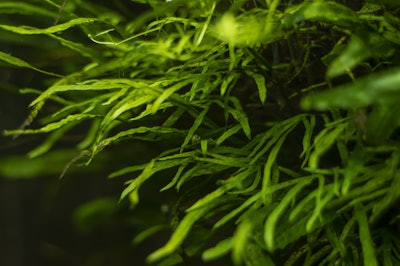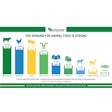
Every novel and emerging protein ingredient could fill a niche within aquaculture's growing demand for feed, but some look better than others, according to a high-level study led by IFFO, the Marine Ingredients Organization.
Feed production needs to double to reach more than 100 million tons by 2050 if aquaculture is going to keep up with growth projections, according to Brett Glencross, technical director for IFFO. But the study, which evaluated the strengths, weaknesses and availability of a variety of ingredients, found that no single emerging or novel ingredient can meet aquaculture's growing need for protein. Instead, it is likely that feed formulators will need to adopt a strategy of using multiple, complementary sources of protein in future aquaculture diets, Glencross said.
“Some ingredients — soybeans are a good example — have a huge volume of production and are well understood, but they have a problem in that fish don't like eating them,” Glencross said. “But that flip side of that is basically marine ingredients — very finite in their availability, not a lot of them to go around ... but they are really palatable and fish love them. So if we match the soybean and the marine ingredients together, you have a complementary package, and that is sort of the way the world is moving forward.”
There is some room for growth in marine ingredient production, Glencross said. By making better use of byproducts and improving overall efficiency, fishmeal production could grow by another several million tons. This fishmeal would come with the added benefit of a low carbon footprint, he said, but no amount of efficiency will squeeze 50 million metric tons of new protein from fishmeal.
Plant-based ingredients from terrestrial crops will likely make up most of the difference thanks simply to the huge volume of crops grown throughout the world each year, Glencross said. But he also sees particular promise in algae and in single-cell proteins as well. Algae is already starting to see production pick up; building out the needed infrastructure is a long process, Glencross said, but algae growers are “moving ahead quite nicely.”
Single-cell protein, on the other hand, remains an up-and-coming ingredient relative to algae, but has the unique potential to use feedstocks like methane gas that can't be consumed by other organisms, Glencross said. That means single-cell protein production could expand without cutting into resources needed to produce other ingredients or foodstuffs.
Insect meal, on the other hand, seems to be struggling, Glencross said. Despite enthusiasm about this protein's potential, production just doesn't seem to be reaching the scale needed to put a dent in the 50 million-metric-ton goal.
But that said, Glencross said he wouldn't rule insects entirely out of the mix.
“We need everything on the table,” he said. “We need another 50 million tons just for aqua, so we can't afford to push things off the table. We actually need to bring things to the table.”


















